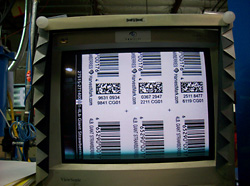
Whether it’s a single watermelon or a clamshell of strawberries, traceability solutions in the produce industry are all built on a simple foundation: a carefully designed label that gives each item, or each package, a unique identification number or code.
Armed with this ID, growers and packers can track an individual item back to its source in the event of food safety issues or recall. In addition, consumers will also be able to trace the source and distribution of their produce purchase on their iPhone or the Web. One private, industry-traceability solution provider is HarvestMark. But for it to be effective, it must rely on a network of partnerships with both growers and label converters.
Label converters such as Creative Labels Inc., which has partnered with HarvestMark, must invest in the latest variable data printing and quality assurance (QA) technologies to print the billions of labels, in sequential order, that will be required in the next several years.
“The label converters really make traceability possible. They are the key to the whole thing,” says Elliott Grant, chief marketing officer and the founder of HarvestMark. According to Grant, a traceability solution like HarvestMark now requires labels that include not only the traditional printed company artwork and product information, but also a sophisticated 2D barcode. A 2D barcode can store up to 7,089 characters within a graphical image, significantly greater than the 20-character capacity of a traditional barcode.
Variable data printing, a form of on-demand printing in which elements such as text, graphics and images may be changed from one printed item to the next, is well understood to be the future of label printing. However, for many label converters, variable data printing requires a 6-figure investment in the appropriate equipment along with extensive training.
“It’s a combination of having the right equipment and the right set of technical skills so they can not only print a high-quality label, but also print the unique 2D barcode on each label at line speed,” explains Grant.
With the importance of the label in the process, HarvestMark relies on certified partners to print and/or integrate HarvestMark codes into their packaging materials and products.
Oxnard, CA-based Cool Pak works directly with growers and shippers throughout the
To date, Cool Pak has utilized HarvestMark for both strawberries and grapes. The company uses Gilroy, CA-based Creative Labels, also a certified HarvestMark partner, for its labels. Creative Labels specializes in printing high-quality and pressure-sensitive labels, tags and coupons for many industries, and has worked with many produce growers and shippers in

